
Advantages
• Energy is clean and non-polluting. Like the surface wind turbines, underwater turbines are also very clean and non-polluting.
• Economic. Underwater tidal power is cheaper than its relative tidal power. This is because it's expensive to build damns.
• Integration. These systems can be placed virtually anywhere underwater, they do not require special dams or channels or underwater pathways to be constructed.
• Safe. Systems appear to be safe for fish, as the rotors are slow turning. Also, they should be safe for submarines, as submarines have complex radar navigation and don't easily run into things underwater.
Disadvantages
• In development. This type of energy generation is still relatively new and in development, so we don't know what are the possible side effects to the environment due to placement of turbines underwater. It's hard to predict how this will affect ocean/river currents. Testing is underway.
The picture shows a turbine installed offshore. It turns into the current to accept flow from any direction. It is continuously adjusting for maximum efficiency.
Solar Energy
incredible – невероятный fusion reactor – термоядерный реактор consume – потреблять inexhaustible – неисчерпаемый commercial patent – патент photovoltaic effect – фотоэлектрический эффект selenium – селен insulated – изолированный |
copper coil – медные спираль, катушка demands – запросы the Gulf War – война в Персидском заливе sought – необходимый advent – появление production cost – производственные расходы dramatically – значительно purchase cost – затраты на покупку |
History
The Earth receives an incredible supply of solar energy. The sun, an average star, is a fusion reactor that has been burning over 4 billion years. It provides enough energy in one minute to supply the world's energy needs for one year. In one day, it provides more energy than our current population would consume in 27 years.
S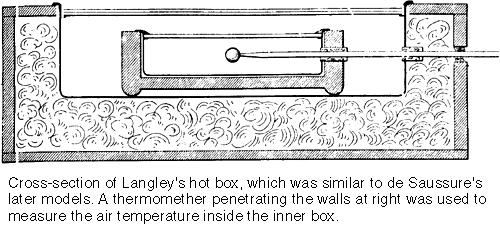 olar
energy is a free, inexhaustible resource, yet harnessing
it is
a relatively new idea. The ability to use solar power for heat was
the first discovery. A Swiss scientist, Horace de Saussure, built the
first thermal solar collector in 1767, which was later used to heat
water and cook food. The first commercial patent for a solar water
heater went to Clarence Kemp of the US in 1891. This system was
bought by two California executives and installed in one-third of the
homes in Pasadena by 1897.
olar
energy is a free, inexhaustible resource, yet harnessing
it is
a relatively new idea. The ability to use solar power for heat was
the first discovery. A Swiss scientist, Horace de Saussure, built the
first thermal solar collector in 1767, which was later used to heat
water and cook food. The first commercial patent for a solar water
heater went to Clarence Kemp of the US in 1891. This system was
bought by two California executives and installed in one-third of the
homes in Pasadena by 1897.
Producing electricity from solar energy was the second discovery. In 1839 a French physicist named Edmund Becquerel realized that the sun's energy could produce a "photovoltaic effect" (photo = light, voltaic = electrical potential). In the 1880s, selenium photovoltaic (PV) cells were developed that could convert light into electricity with 1-2% efficiency (the efficiency of a solar cell is the percentage of available sunlight converted by the photovoltaic cell into electricity), but how the conversion happened was not understood. Albert Einstein proposed an explanation for the "photoelectric effect" in the early 1900s, for which he won a Nobel Prize.
"Solar technology advanced to roughly its present design in 1908 when William J. Bailey of the Carnegie Steel Company invented a collector with an insulated box and copper coils." By the mid-1950s Bell Telephone Labs had achieved 4% efficiency, and later 11% efficiency, with silicon PV cells. From then on, interest in solar power intensified. During the late 1950s and 1960s, the space program took an active role in the development of photovoltaics. Unfortunately, the cells were not practical for use on earth due to the high cost of making them efficient and lightweight, so further research was necessary.
"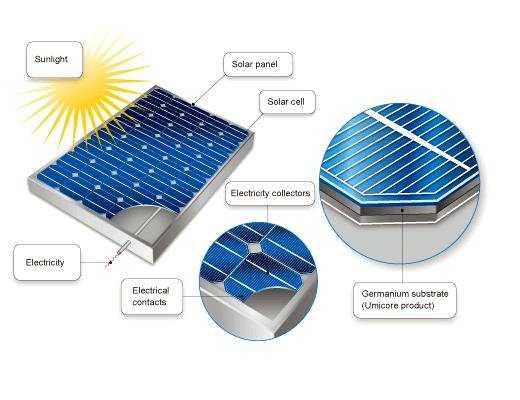 Only
in the last few decades when growing
energy demands,
increasing
environmental problems
and declining
fossil fuel resources
made us
look to
alternative energy options have
we
focused
our attention on truly exploiting this tremendous resource." For
instance, the US Department of Energy funded the installation and
testing of over 3,000 PV systems during the 1973-1974. Solar energy
improvements were again sought during the Gulf War in the 1990s.
Only
in the last few decades when growing
energy demands,
increasing
environmental problems
and declining
fossil fuel resources
made us
look to
alternative energy options have
we
focused
our attention on truly exploiting this tremendous resource." For
instance, the US Department of Energy funded the installation and
testing of over 3,000 PV systems during the 1973-1974. Solar energy
improvements were again sought during the Gulf War in the 1990s.
Considering that "the first practical solar cells were made less than 30 years ago," we have come a long way. The biggest jumps in efficiency came "with the advent of the transistor and semiconductor technology." The production cost has fallen to nearly 1/300 of what it was during the space program of the mid-century and the purchase cost has gone from $200 per watt in the 1950s to a mere $5 per watt today. The efficiency has increased dramatically to 18.8% (February 1999).
Solar energy
thermal – термальный, тепловой photovoltaic – фотогальванический fluid – жидкость is composed of – состоит из abundant – изобилующий the earth's crust – земная кора cell – ячейка, фотоэлемент wired – скрепленный array – ряд, матрица array field – поле солнечных батарей promising – многообещающий to require – требовать maintenance – текущий ремонт supervision – надзор |
running costs – текущие расходы remote areas – удаленная местность community – населенный пункт to keep in step with – идти в ногу с to overbuild – чрезмерно застраивать capacity – ёмкость, мощность commitment – активность, заинтересованность direct/alternating current – прямой/переменный ток call box – телефонная будка highway signs – дорожные знаки marine buoy – буй unmanned – управляемый автоматически rural habitation – сельский населенный пункт consumer – потребитель |
W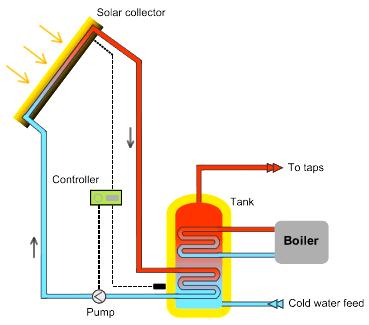 e
still use solar power in the same two forms today, thermal and
photovoltaic. The first concentrates sunlight, converts it into heat,
and applies it to a steam generator or engine to warm buildings, heat
water, generate electricity. Electricity is generated when the heated
fluid drives turbines or other machinery. The second form of solar
power produces electricity directly without moving parts. Today's
photovoltaic system is composed of cells made of silicon, the second
most abundant element in the earth's crust. Power is produced when
sunlight strikes the semiconductor material and creates an electric
current. The smallest unit of the system is a cell. Cells wired
together form a module, and modules wired together form a panel. A
group of panels is called an array, and several arrays form an array
field.
e
still use solar power in the same two forms today, thermal and
photovoltaic. The first concentrates sunlight, converts it into heat,
and applies it to a steam generator or engine to warm buildings, heat
water, generate electricity. Electricity is generated when the heated
fluid drives turbines or other machinery. The second form of solar
power produces electricity directly without moving parts. Today's
photovoltaic system is composed of cells made of silicon, the second
most abundant element in the earth's crust. Power is produced when
sunlight strikes the semiconductor material and creates an electric
current. The smallest unit of the system is a cell. Cells wired
together form a module, and modules wired together form a panel. A
group of panels is called an array, and several arrays form an array
field.
There are several advantages of photovoltaic solar power that make it one of the most promising renewable energy sources in the world. It is non-polluting, has no moving parts that could break down, requires little maintenance and no supervision, and has a life of 20-30 years with low running costs. It is especially unique because no large-scale installation is required. Remote areas can easily produce their own supply of electricity by constructing small or large systems. As communities grow, more solar energy capacity can be added, allowing power generation to keep in step with growing needs without having to overbuild generation capacity as is often the case with conventional large scale power systems.
Solar energy is most sought today in developing countries. India is becoming one of the world's main producers of PV modules, with plans to power 100,000 villages and install solar-powered telephones in its 500,000 villages. By 2000, Mexico plans to have electrified 60,000 villages with solar power. Probably the most outstanding example of a country's commitment to solar power is in Israel. In 1992, over half of all households (700,000) heated their water with solar energy systems. And there are 50,000 new installations every year.
A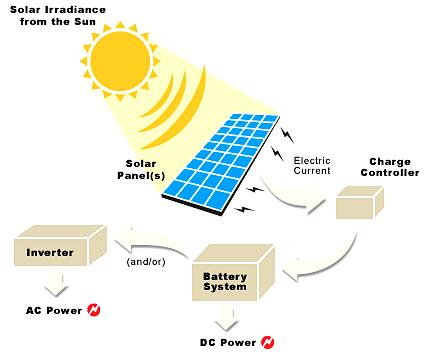 n
average home has enough roof area to produce solar electricity to
supply all of its power needs. With an inverter, which converts
direct current (DC) power from the solar cells to alternating current
(AC), a solar home can look and operate very much like a home that is
connected to a power line.
n
average home has enough roof area to produce solar electricity to
supply all of its power needs. With an inverter, which converts
direct current (DC) power from the solar cells to alternating current
(AC), a solar home can look and operate very much like a home that is
connected to a power line.
Household energy supply is but one use of solar power. Roadside call boxes and lighted highway signs rely on the sun's energy. Navigational systems such as marine buoys and other unmanned installations in harsh remote areas are also ideal applications for solar power. Rural habitation includes "cabins, homes, villages, clinics, schools, farms, as well as individually powered lights and small appliances." Consumer/indoor uses of PV cells include watches and calculators; PV modules power computers and radios.
Biomass energy
store – хранить transfer – передавать combustion – сгорание to release – выпускать vegetation – растения residues – остатки, отбросы aquatic – морской due to – благодаря to utilize – использовать renewable – возобновляемый to account for – составлять plentiful – обильный, в избытке charcoal, coal – уголь |
prior to – раньше, до того как narrow definition – узкое определение exclude – исключать otherwise – в противном случае dependence on – зависимость от feedstocks – сырьё для промышленности algae – водоросли soybeans – соевые бобы stalk – стебель husks – шелуха straw – солома long-term – долгосрочный lumber mill scrap – отходы лесопилки |
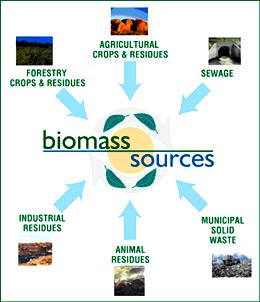
The term "biomass" refers to organic matter that has stored energy through the process of photosynthesis. It exists in one form as plants and may be transferred through the food chain to animals' bodies and their wastes, which can be converted for everyday human use through processes such as combustion.
Many of the biomass fuels used today come in the form of wood products, dried vegetation, crop residues, and aquatic plants.
Biomass has become one of the most commonly used renewable sources of energy in the last two decades. It is such a widely utilized source of energy, probably due to its low cost, that it accounts for almost 15% of the world's total energy supply and as much as 35% in developing countries, mostly for cooking and heating.
B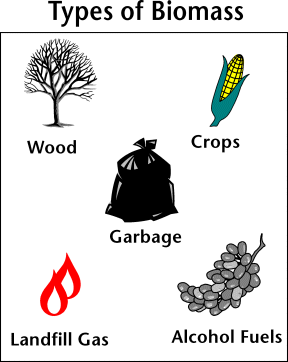 iomass
is one of the most plentiful sources of renewable energy in the
world. Broadly speaking, it is organic material produced by the
photosynthesis of light. The most common biomass used for energy is
wood from trees. Wood has been used by humans for producing energy
for heating and cooking for a very long time.
iomass
is one of the most plentiful sources of renewable energy in the
world. Broadly speaking, it is organic material produced by the
photosynthesis of light. The most common biomass used for energy is
wood from trees. Wood has been used by humans for producing energy
for heating and cooking for a very long time.
Wood is still the largest biomass energy resource today, but other sources of biomass can also be used. These include food crops, grassy and woody plants, residues from agriculture or forestry, oil-rich algae, and the organic component of municipal and industrial wastes. Even the fumes from landfills (which are methane, a natural gas) can be used as a biomass energy source.
Biomass can be used for fuels, power production, and products that would otherwise be made from fossil fuels. Biomass can provide some benefits.
For example:
● The use of biomass energy can greatly reduce greenhouse gas emissions. Burning biomass releases about the same amount of carbon dioxide as burning fossil fuels. However, fossil fuels release carbon dioxide captured by photosynthesis millions of years ago, while biomass releases carbon dioxide that is largely balanced by the carbon dioxide captured in its own growth.
● The use of biomass can reduce dependence on foreign oil.
● Biomass energy supports U.S. agricultural and forest-product industries. The main biomass feedstocks for power are paper mill residue, lumber mill scrap, and municipal waste. For biomass fuels, the most common feedstocks used today are corn grain (for ethanol) and soybeans (for biodiesel). In the near future agricultural residues, such as corn stalks, leaves, and husks and wheat straw, will also be used. Long-term plans include growing and using energy crops, such as fast-growing trees and grasses, and algae.
Geothermal energy
to tap – осваивать, перехватить, использовать spot – место hot spring – горячий источник rocks – горные породы to glean – тщательно собирать to fracture – разламывать prominent – выдающийся geologic plates – тектоническая плита coupled with – совместно с assumption – предположение infinite – безграничный noticeable – заметный depletion – истощение defunct – исчезнувший |
prevent – предотвратить closed-loop system – замкнутая система re-injection – обратная закачка rare – редкий wilderness – дикая природа harvest – добывать, собирать combustion – сгорание, сжигание dissolved solids – нерастворимые вещества deep-crustal drilling – глубокое бурение acquisition – добыча handful – горстка shallow ground – поверхностный слой земли to utilize – использовать benefits – выгода |
The source of geothermal power is the heat contained inside the Earth. There are a few different types of geothermal energy that can be tapped.
1) "Some geothermal systems are formed when hot magma near the surface (1,500 to 10,000 meters deep) directly heats groundwater." The heat generated from these hot spots flows toward the surface (volcanoes, geysers, and hot springs). Naturally-occurring hot water and steam can be tapped by energy conversion technology to generate electricity or to produce hot water for direct use.
2) "Other geothermal systems are formed when magma heats rocks which in turn heat deeply-circulating groundwater." In order to maximize the energy gleaned from these so-called "hot dry rocks," geothermal facilities will often fracture the hot rocks and pump water into and from them in order to use the heated water to generate electricity.
I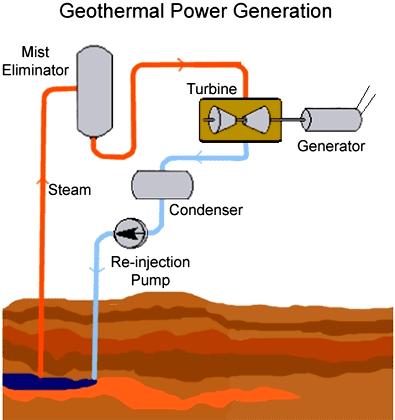 celand,
New Zealand, the Philippines, and South America are some of the more
prominent global "hot spots" in the world. In Iceland,
geothermal energy, caused by the constant movement of geologic plates
coupled with the volcanic nature of the island, is used to heat 95%
of all homes.
celand,
New Zealand, the Philippines, and South America are some of the more
prominent global "hot spots" in the world. In Iceland,
geothermal energy, caused by the constant movement of geologic plates
coupled with the volcanic nature of the island, is used to heat 95%
of all homes.
Unfortunately even good geothermal areas are non-renewable. "The Geysers," the world's largest geothermal facility, built in the 1950s on a steam field in Northern California, was established on the assumption that geothermal resources were infinite. However, by the late 1980s, steam decline became noticeable. Depletion occurred because steam was being extracted faster than it could be naturally replaced. The Geysers was still producing enough electricity to supply the power demand of a city like San Francisco, the steam field can be defunct in 50 years or so. To prevent this sort of thing, geothermal facilities can use a closed-loop system, or the re-injection of water back into the system for constant steam generation.
Despite the fact that geothermal energy is abundant, fields of sufficient quality to produce economic electricity are rare. In addition, many of them are located in protected wilderness areas. Although no combustion occurs, some applications produce carbon dioxide and hydrogen sulfide emissions, require the cooling of as much as 100,000 gallons of water per megawatt per day, and dispose of toxic waste and dissolved solids. Unless research and technology join forces to "harvest" geothermal power through non-traditional means, such as deep-crustal drilling or the acquisition of heat from magma, the tapping of geothermal energy is limited to a handful of locations.
Another type of geothermal energy being used commercially is Earth energy, extracted through heat pumps. Heat contained in shallow ground is used to directly heat or cool houses. In winter the ground is warmer than the air and can be used to heat a building, and in summer the ground is cooler than the air and can act as an air conditioner. This technique reduces the reliance on other resources and can be utilized anywhere, resulting in significant environmental benefits and reduced energy costs.
